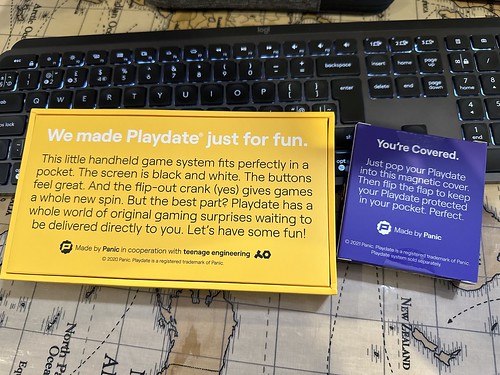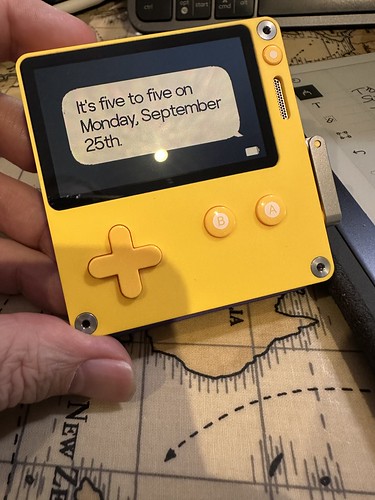If ever a review was written under a cloud, this is it. Well, this is it until I finally read
by Magpie Games.
is Pelgrane Press' long delayed swords and sorcery game powered by the GUMSHOE engine. For a variety of reasons, it was stuck in pre-order hell along with quite a few other Pelgrane products. I'd reached the point of referring to them as "Pre-order Press" which is never a good thing. The communication felt lacking and I was starting not to care at all about the book, when all of a sudden it arrived, very well packaged, in the middle of an otherwise tedious workday and all this was forgotten.
TL;DR: Pelgrane Press have produced a great addition to the GUMSHOE line. The setting is evocative and full of inspiration; there's potential for many hours of entertainment in a well-written swords and sorcery setting. The game engine has been fine-tuned into a sharply energetic version perfect for the genre.
The big question this gorgeously-illustrated, 380-page full-colour volume has to answer for me is whether it can compete with
Through Sunken Lands and also Mark Galeotti's
Gran Meccanismo by Osprey Games, both of which were released in the period after I pre-ordered, and both of which I've either run or played already. Could this be the first GUMSHOE game that I actually run?
GUMSHOE is a system I'm very familiar with. I've played The Esoterrorists extensively, had a weekend at Longcon playing an abridged version of the Dracula Dossier for Night's Black Agents, and I'm currently midway through Eternal Lies for Trail of Cthulhu. I'm also in an episodic King in Yellow RPG campaign. Each of the GUMSHOE line's roleplaying games brings its own unique flavour tailored for its setting. I know that you can get high tension and excitement with the engine, but I was skeptical that full on swords and sorcery was achievable. Not so skeptical that I didn't pre-order it, based on some blog posts, but skeptical enough that I understood that it could be a white elephant, read once & condemned to a shelf or to be sold on.
I'm happy to say that this isn't the case. Kevin Kulp and Emily Dresner have produced a sharply energetic version of GUMSHOE that absolutely nails the genre. The game is set in the city of Eversink, a pseudo-Venice set in the swamps as the Serpentine River reaches the sea. Eversink was born out of a pact with the then somewhat-minor swan goddess Denari. The pact took the form of a contract for worship with performance measures to be reviewed by the goddess after a thousand years have passed. If performance has been satisfactory, the contract may be renewed. The Church of Denari dominates the city in an uneasy balance with the new money of the Mercanti and the old money of the Ancient Nobility which traces its ancestry back to the founding of the city. The commoners toil, and the City Watch struggles to keep the peace. The Guild of Architects & Canal Watchers delays the slow sinking of the city into the swamp. Multiple thieves guilds vie for coin, but alway tithing to the Church lest they face the wrath of the goddess. Sorcerous cabals lurk in the city, spreading corruption as they seek for forbidden knowledge. Outlanders visit to make their fortune, and rumours persist that Monstrosities can be found in the sunken buildings and basements below the surface of the present city.
In short, this is Venice, Lankhmar, Ankh-Morpork and more. Much like Through Sunken Lands, there are echoes of genre favourites throughout. Character generation starts with the GM and players agreeing on the tone of the game and the reasons the party work together. There are four core professions; sentinels (expert in crimes and investigations, sorcerers (illegal but powerful, at risk of falling to corruption or being punished for heresy); thieves (specialists in secrets, treachery and larceny); and warriors (those who fight). You can mix and match professions if you prefer.
Each player picks some adjectives to describe their personality and then their 'three drives'. To get these, they answer the question, "What three things are best in life?", taken from the 1982 Conan movie. Once per adventure, a drive can be invoked (if it's appropriate) to gain a bonus on a die roll or allow the use of a general ability a character doesn't have ranks in.
Like other GUMSHOE games, abilities are split into two types: investigative and general. The list of skills are short compared to its peers. Investigative abilities always work but their points can be spent to gain special abilities and do remarkable things. Each investigative ability describes what the benefits of spends are. For example, 2 points of Command are enough to order strangers around because they believe you have authority. Spend a point of Felonious Intent, and you can find a helpful contact who owes you a favour. Spending Corruption creates powerful magical effects, but a sorcerer must internalise the spend (risking unnatural scarring and mutation) or externalise it into the environment leaving a hint that the Church's Inquisitors can and will follow. Scurrilous Rumors allows you to use gossip both positively and negatively, which is fun.
You pick the factions that you are allied with and those who are your enemies. You can chose to have a relationship with The Triskadane, the 13 Secret Rulers of the city picked by the goddess herself, should you wish, and the game gives sound advice on how to manage if players build their characters so they're influential. General abilities have a much shorter list (ten in total) than most GUMSHOE games. If you have rank 8 or above, you have a talent for that ability that will provide special bonuses.
Two of the abilities – Health & Morale – govern how much damage you can take. You get 18-points to spend on these (with a minimum of 3 in either). If one is above 10-points, it makes you harder to harm. Combat abilities take one of three forms; Sorcery, Sway or Warfare. High scores in these allow you to brush off mooks. Sway affects morale, Warfare affects Health and sorcery can do both. It's entirely feasible to defeat opponents by breaking their morale.
You use general abilities by rolling d6 and adding however many points you want to spend. Typically, you'll want to roll 4+ to succeed, meaning that a 3-point spend will usually guarantee success. However, you have finite numbers of points in each abilities pool, so there is a strategic element in deciding whether to spend or not. You can gain extra points to spend if you can rationalise the spend of an investigative ability. Each investigative point spent gives +3 to your dice roll or adds an extra die of damage if you've already hit. However, you're unlikely to refresh your investigative abilities until the end of the adventure, so spending wisely is a must.
General abilities are a different matter. Defeating enemies, traps and obstacles earns refresh tokens, which are discarded at the end of a scene if they aren't used. These tokens go in a bowl and the players can use them recover points that they've spent. I've not seen this in use before in GUMSHOE. However, this mechanic, combined with the ability to spend investigative ability points to boost rolls and more, means that the game engine works well to emulate the literature which inspires it.
Sorcery & Corruption gets a dedicated chapter. A sorcerer choses a sphere of influence that they can affect for every rank of corruption that they possess. These effectively describe the style of your magic; the kind of special effects that you'd use if you were in a movie. All sorcery comes from one of two sources; either the hidden powers of the serpentine (the long-extinct serpent people that predated humanity) or from a bargain with a demon, small god or spirit who will likely want to use you to further their cause. Remember that the goddess Denari gained her power from the contact that defined her worship, so it is feasible for a small god to gain worshippers and power if their agent works well. All the example spheres have details on whether they affect health or morale when used to attack; they also have a short description of the kind of effects that can be achieved, along with the likely impact of spending corruption points.
You can use sorcery freely; if your sorcerer describes a normal, regular activity they do, they can chose to describe it as being done by their power at no-cost. Similarly, they can describe any investigative spend as coming from their sorcery. This may enable a spend where it wouldn't be easy to do otherwise. The example given is using wind magic to spread rumours across the city using the Scurrilous Rumors ability. General ability tests can also be described as being done by magic. Sorcery can be used to to attack or carry our manoeuvres. You can make this far more powerful by spending corruption points to significantly raise the effect of your magic. Corruption point spends allow you to significantly raise damage caused, or create area damage effects. A sorcerer can also use them to create manoeuvres that they don't have the right abilities for, or create unique spells. They can curse foes and create sorcerous glyphs and traps. If an adversary is the target of such effects, then they can resist, which is treated like a normal manoeuvre. Unique spells can be whatever you like (agreed with the GM). The example given is transmuting a victim to a chicken. You always give a partial effect option; the target can chose to resist and have a more minor effect with damage or take the full spell consequences.
But (there's always a' 'but", isn't there?) if you spend corruption it needs to go somewhere. You can internalise it with a health test. Succeed and you get a non-obvious change to your body. Fail, and it's obvious. Often this corruption will manifest in a form related to the source of your sorcerous power. So you may slowly take the form of a snake if you are drawing upon the powers of the long lost Serpentine. Of course, with dark rites, you could internalise it with someone closely linked to you, like a blood relative. Perhaps a use for that younger sibling or feckless cousin? Alternatively, you could externalise the corruption, spiritually scarring the area around you, harming Denari's blessing upon Eversink and potentially causing buildings to collapse, evil and supernatural beings to be attracted, nature to twist and change and reality to be torn. The Inquisition really frown upon this. High spends of corruption can contaminate large areas of land around. But at least you won 't be changed by it! However, everyone around you, including your colleagues will be terrified, damaging their Morale score. The Church does try to deal with corrupted locations, either sealing them off or curing them.
There are advanced rules for rituals, true names, curses and sorcerous glyphs and traps. These are initially likely to be the domain of adversaries of the party, but in time they'll surely tempt sorcerers as they give more power, and of course they can control it, can't they? The book discourages a starting GM from reading this section at first.
Wealth is managed with an abstract system were the lifestyle you maintain impacts your reputation with different parts of society. This nicely mirrors the ups and downs in heroes' fortunes seen in the source swords and sorcery literature.
The equipment chapter details weapons, armour and a wide variety of items tailored to Eversink (for example "Costino's Cameos", famous and valuable paintings which are collectable and people will kill for; a Guild or Church Badge of office, great for influencing people; or even Denari's book of Truths and Tax Code). Poisons, magical items and sorcerous gear are all provided for. This is everything you'd want and expect.
Adversaries get their own chapter, which begins by describing the difference between supporting characters, companions, adversaries, monstrosities and mooks. The latter will go down quickly, but can be dangerous in numbers. There is sound advice on selecting the health, morale, combat effectiveness and abilities for enemies. This includes elements like limiting damage to adversaries until the mooks are all taken down (you'd tell the players that this is the case to incentivise them), scaling adversary abilities and using Armor and Grit scores to manage survivability. Adversaries have a wild-card ability called Malus. This can be used in place of any general ability, can boost attacks, give investigative pool points, trigger special abilities or create more powerful manoeuvres.
There's a simple template for building opponents; it's functional but I can't help but think there must be a way to do this more graphically and make it easier to use. One for me to ponder when I run this. Adversary special abilities get a decent list with costs, then there's a section which gives a great selection of background characters to use. These are mainly linked into the different factions, with several examples from each. There is a section for monstrosities; animated statues, fly worshippers, swamp dwelling Chugguts, ghosts and more terrifying local, unique threats like "The Drowned", the "Faceless" and the Rattakan. For some reason the Serpentine (Serpent Men) are detailed but surely they all died out thousands of years ago before humanity rose? Didn't they?
The GM chapter is sound, starting with brief advice on safety in games before covering tone of the game. GMs are encouraged to get the players to co-create the world by asking questions, sound advice to build investment in the shared world. There's good guidance on character creation and what their development choices lively mean. Having played GUMSHOE for a while, I think the guidance on investigative point spend will prove very helpful for a starting GM. There's further wisdom on running fights effectively and making them fun for players. The next advice given is on how to use Allies and Enemies to make things exciting (or at least "interesting" for the party.
Adventure structure is covered, especially considering mysteries and clues. Scene types are considered-flashbacks are included! The GM is encouraged to create a plot map which is sound advice. However, I found the example quite irritating as what is in effect a flowchart has been drawn on a grid and made to look like a dungeon map. I found it very twee, and the graphic design added nothing to the functionality.
The chapter rounds out by discussing how to customise the game to meet your preferences. This includes replacing (or perhaps adding) the alternative of Thaumaturgy in place of sorcery. One-on-one play is discussed, along with playing heroes at different stages of their career, perhaps even as a ghost if things go badly wrong.
Next up is a large chapter which describes the city of Eversink by taking you on a grand tour of the map. Districts have key locations described with copious plot hook examples. The areas around the city are also outlined, along with how government, the law and culture works. Each faction has notes on what being an ally or enemy will likely mean for our heroes. The chapter rounds out with example internal and external threats to Eversink. These are seeds for campaigns to explore.
The chapter on Eversink is followed by an exploration of the world the city resides in. There's a full spread world-map and then nutshell descriptions of each country, its government, the people and society, and who are its friends and enemies. These are designed to give initial inspiration (and perhaps enough of an idea for a character from such a country that a player may want to be).
The last chapter is an introductory adventure – Corpse Astray – where the characters get the chance to stumble into a complicated revenge plot involving the theft of corpses after they arrive in Eversink after a somewhat traumatic sea journey. It hits all the notes that it needs to, and the advice for running is very solid. I liked this one rather than loved it.
The book concludes with a really useful set of appendices. These are play aids on how the system works for new players, a guide on creating characters, another on using sorcery, plus lots of useful reference tables. There's also a character sheet and a sheet to track allies, enemies, grudges and repute. Finally, there is an extensive and useful index.
The book itself is a 380-page full-colour hard back with a striking image of a thief perilously climbing a tower above Eversink. There are some lovely character illustrations, especially in the adversaries chapter. The end-leafs are both two-page spreads of the city map. The layout is workman-like; it's clean and easy to read, with good use of colour and tabs on page edges to differentiate sections. I find this much better than some of Pelgrane's other lines where the text size made it hard to read. I describe it as workman-like because it does what it needs to rather than exciting me with the presentation. However, this is a rule book, designed to transfer information, and as such it beats many fancier designs. It will be great at the table.
To conclude; Pelgrane Press have produced a great addition to the GUMSHOE line. I will be running this at Furnace to get a better feel for the game in play, but my past experience with the game engine makes me confident it will work well. The setting is evocative and full of inspiration; there's potential for many hours of entertainment in a well written swords and sorcery setting.
Recommended
9 September 2023











